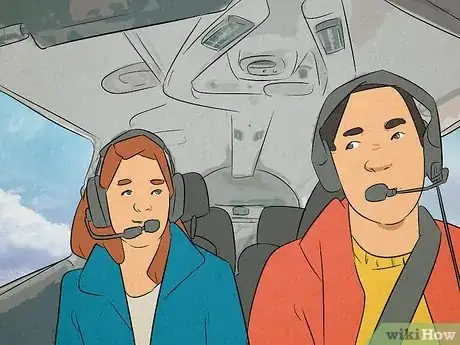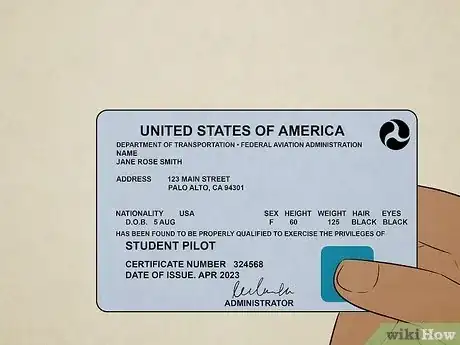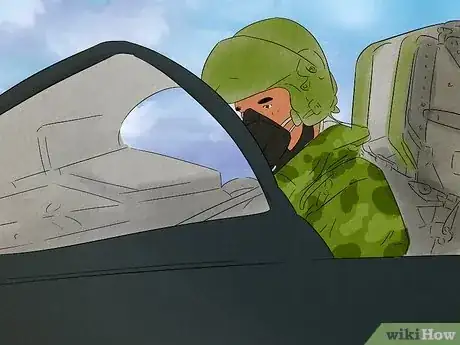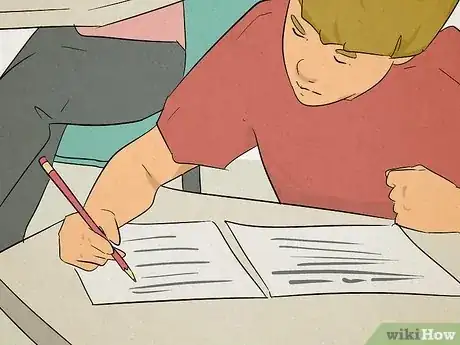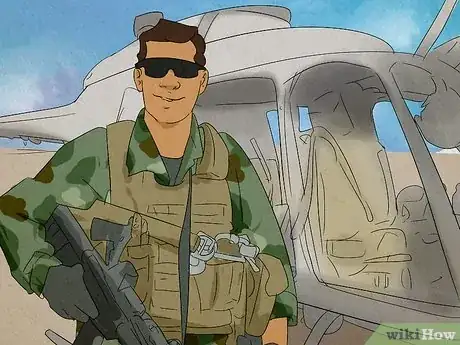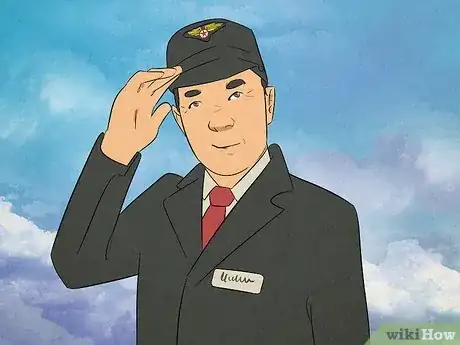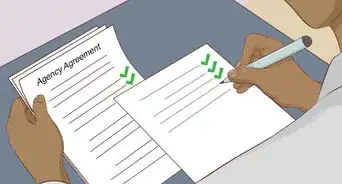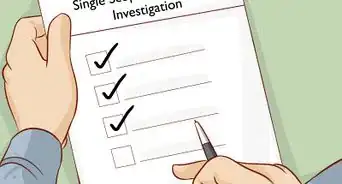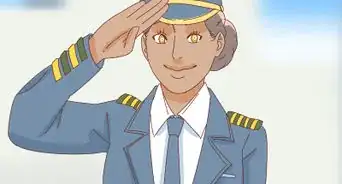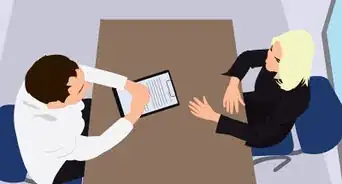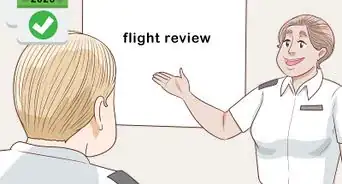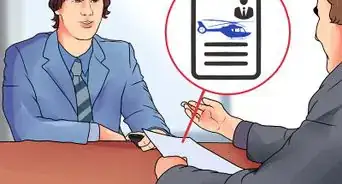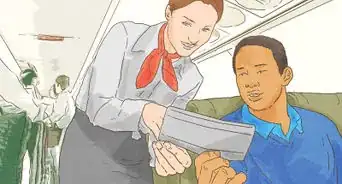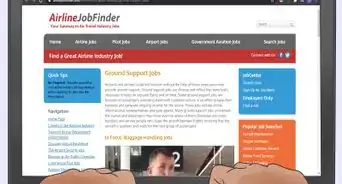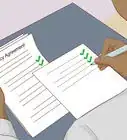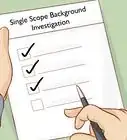This article was co-authored by Javier Diaz. Javier Diaz is an Entrepreneur & Stunt Helicopter Pilot, and owner of Wings Air Helicopters LLC. With over 20 years of flying experience, his company specializes in helicopter charters, tours, flight training, and aerial film production. He earned his BS from the United States Merchant Marine Academy and is a member of the Screen Actors Guild (SAG). As a Stunt Pilot, Javier has many major film credits, including several blockbuster films.
There are 8 references cited in this article, which can be found at the bottom of the page.
wikiHow marks an article as reader-approved once it receives enough positive feedback. In this case, 100% of readers who voted found the article helpful, earning it our reader-approved status.
This article has been viewed 127,631 times.
Becoming a pilot takes years of education, training, and licensure. Preparing early will help you know what to expect and plan out your career map beforehand. For the best-paying piloting careers, you will need at least ten years of experience to qualify. Work hard and practice often to meet the requirements for a piloting career.
Steps
Gaining Education
-
1Graduate high school. To enter flight school in the U.S. (and likely elsewhere, such as Australia), you will need your high school diploma. Study hard in school, and consider taking physics or mathematics courses to prepare early. If you do not have your high school diploma, earn a General Education Development (GED) certificate.[1]
- Some flight instructors offer flying courses to teenagers as young as 16. Call local flight instructors to ask what their policies are. You may be able to get a head start in your training.
-
2Consider joining the military. If you're on the fence about serving, joining the military can be a great way for you to receive flying lessons and gain hours. In the United States, the Air Force, Navy, National Guard, and Coast Guard offer flight training. Once you return to civilian life, you will already have flying hours under your belt.
- To join the U.S. military, you must be at least 18 years old. If you are 17, you may join with parental consent.[2]
Advertisement -
3Complete your bachelor's degree in aviation or a related discipline. Although not required for every pilot job, most flight schools or employers prefer that an applicant has completed four years of college education. Some colleges offer degrees in aeronautics or aviation. If yours does not, pursue a degree in engineering, mathematics, or physics.[3]
- Take liberal arts or humanities courses while you're in college. Flight school admissions offices look for applicants with balanced education.
-
4Take flight training classes. If your college degree did not involve aviation, you will need to take flight classes from an instructor certified with the Federal Aviation Administration (FAA). The FAA recommends that pilots do not apply for licensure until they have gained enough experience to complete a cross-country flight solo.[4]
- Be aware that licensure requires significant experience and that you will be more likely to pass with extensive training.[5]
-
5Go to flight school. There are two major types of flight school: Part 61 training and Part 141 training. Part 61 is the most common type: it is flexible, adjusted by instructors to fit personal needs, and allows you to go at your own pace. Part 141 training is structured and goes at a faster pace, and the lesson plans are more detailed.
Getting Licensed
-
1Get your medical certificate. Passing a physical examination requires several parts. First, you will need to fill out an online application and answer information about your demographics and medical history. Then, you will need to visit a doctor who can validate your physical health in multiple aspects (including height/weight, vision, mental health, and other areas).[6]
- You will have a choice between applying for a first class, second class, or third class medical examination. First class is required for future airline pilots. Second class is required for commercial pilots. Third class is the least restrictive and is required for student licensure.
- If you don't pass your physical examination, all is not lost. You may be able to fix it with treatment. For example, deaf pilots can obtain aircraft certification with an exemption for flights requiring radio communication.[7] People with other disabilities may be eligible for restricted licensure.
-
2Get your student pilot license. After you have received your medical certificate, you can qualify for a student pilot license. This will allow you to fly in less restrictive situations with your instructor and work towards full licensure.
- Student pilots must be able to read, write, and understand English to answer radio calls from fellow pilots. If English is your second language, learn the language thoroughly before you apply.
-
3Gain flying hours. To earn a license, a pilot-in-training needs to earn at least 250 hours of flight time. You can log these hours via flight school, military training, or practicing with an FAA-certified instructor.
- After you gain your license, you will need additional flying hours before you are qualified for more pilot jobs (like working at a commercial airline). Many pilots work as flight instructors to gain more flying hours after graduation.
-
4Pass the written exam. To become a licensed pilot, you will need to pass a written exam that includes safety information and a skills test. Your written exam will be observed by an FAA-certified instructor. Study beforehand and get plenty of sleep the night before so you're prepared when your test date comes.
-
5Pursue further certification. Depending on your goals as a pilot, you may want further certification to qualify you for certain jobs. The FAA offers certification in a variety of areas, such as flight instructor certification or multi-engine plane certifications. U.S. Military pilots are given an aviator badge that signifies special certification and ranking.
Finding Employment
-
1Seek a variety of job opportunities. A broad variety of jobs are available for flight school graduates, depending on how many flight hours you've completed. You can work for emergency services, air shows, firefighting or forestry organizations, or as a flight instructor while you're gaining your hours.
- Different pilot jobs will require more or less hours and experience. If you know what kind of pilot job you want, know the requirements and qualifications needed to obtain that job.
- Some pilots also take engineering jobs with airlines. If you're interested, study engineering as an undergraduate to gain relevant knowledge. You will also need to get a separate engineering license to work with commercial airlines.
-
2Consider employment with the military. There are over 150 flying careers available in the U.S. Air Force, with each requiring different enlistment qualifications. Take the Armed Services Vocational Aptitude Battery (ASVAB) to know which careers you're qualified for.[8]
- If you're in a hurry to find a job, ask to be put on the "quick ship" list. If any recruits drop out, you will be called in to take their place.
-
3Gain enough hours to become a commercial air pilot. For many pilots, their ultimate goal is to work at a commercial airline. You will need 1500 hours of flight time to be hired by a commercial airline, but most major airlines prefer at least 3000 hours.
- Most airline companies will also require their applicants to pass a psychological and intelligence exam.
- New airline pilots often start as first officers in regional airlines, where they can gain experience flying passengers in all weather conditions. Later, you can qualify for better, higher-paying positions.
-
4Achieve seniority for more opportunities. Advancement in most airline jobs is dependent on seniority. After 1-5 years, pilots can qualify for first officer positions. After 5-15 years, first officers can then advance to captain. Seniority will help you gain preferred flight assignments and take time off for weekends or holidays.
- Beyond captainship, experienced pilots can also advance to chief pilot, director of aviation, and other positions depending on where they work.
Community Q&A
-
QuestionCan anyone become a pilot at the age of 20 years only and after three months of training?
 Community AnswerIt depends. To become a pilot you first need to satisfy your country's age requirement. Then, you need to fulfill the required hours. Finally, you must pass the flight test. It is possible to become a pilot even before the age of 20.
Community AnswerIt depends. To become a pilot you first need to satisfy your country's age requirement. Then, you need to fulfill the required hours. Finally, you must pass the flight test. It is possible to become a pilot even before the age of 20. -
QuestionAm I eligible to apply for a pilot job if I wear eyeglasses to correct my vision?
 DanoyachtcaptTop AnswererYes, as long as your eyesight can be corrected to 20/20 vision with glasses or contacts.
DanoyachtcaptTop AnswererYes, as long as your eyesight can be corrected to 20/20 vision with glasses or contacts. -
QuestionMy hand was broken, but with the help of an operation, it is fine. Am I eligible to become a pilot?
 Community AnswerAs long as you can use normal controls and still move your hand normally, you should be fine.
Community AnswerAs long as you can use normal controls and still move your hand normally, you should be fine.
Expert Interview
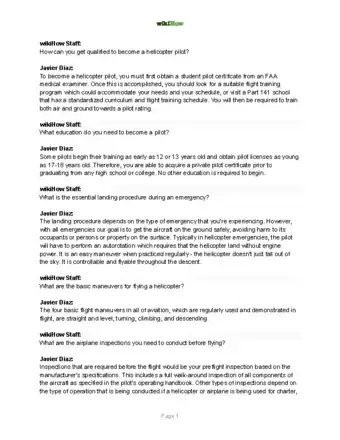
Thanks for reading our article! If you’d like to learn more about becoming a pilot, check out our in-depth interview with Javier Diaz.
References
- ↑ http://learn.org/articles/What_Education_Do_You_Need_to_be_an_Airline_Pilot.html
- ↑ http://www.military.com/join-armed-forces/join-the-military-basic-eligibility.html
- ↑ http://www.degreequery.com/degree-need-become-pilot/
- ↑ https://www.faa.gov/pilots/training/
- ↑ https://www.faa.gov/training_testing/training/pilot_tips/
- ↑ https://flightphysical.com/medical-exam
- ↑ https://www.faa.gov/pilots/become/deaf_pilot/certification/
- ↑ http://www.military.com/join-armed-forces/asvab/asvab-and-air-force-jobs.html
About This Article
If you're interested in becoming a pilot, focus on working hard and getting good grades in high school, especially in math and physics classes. Once you're 16, look into flying classes so you have a leg up on the competition. Then, if you like the classes, consider joining the military after you turn 18 to get more flying instruction and flight time. Another option is going to college and getting a bachelor's degree in aviation or engineering. Along with a degree, you'll also need some time in flight school if you want to become a pilot. If you want to learn how to get your pilot's license from flight school, keep reading the article!




